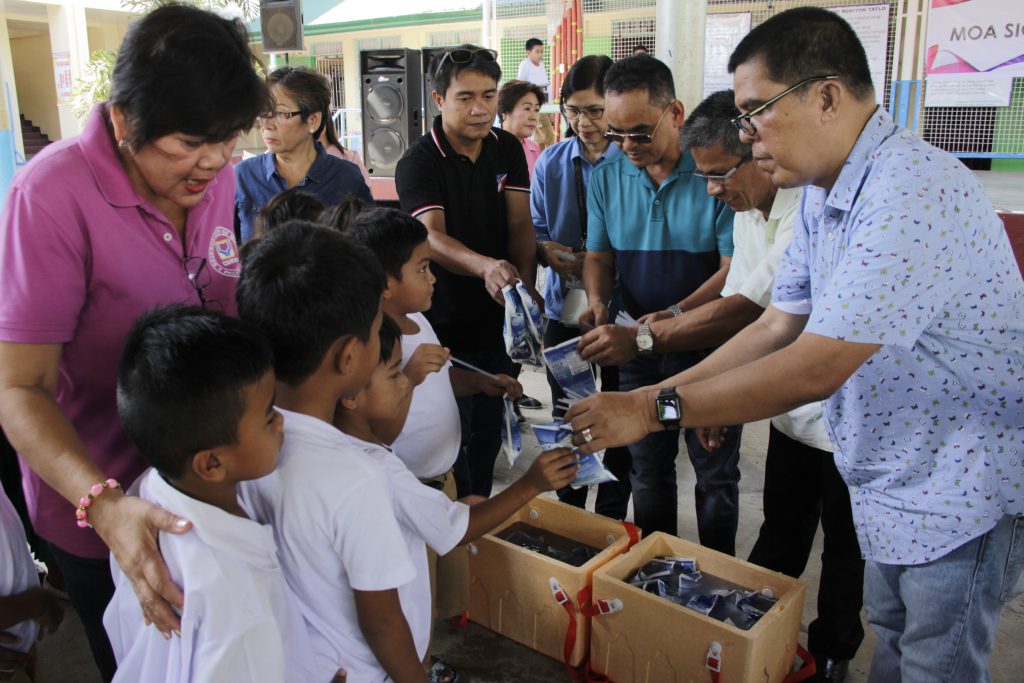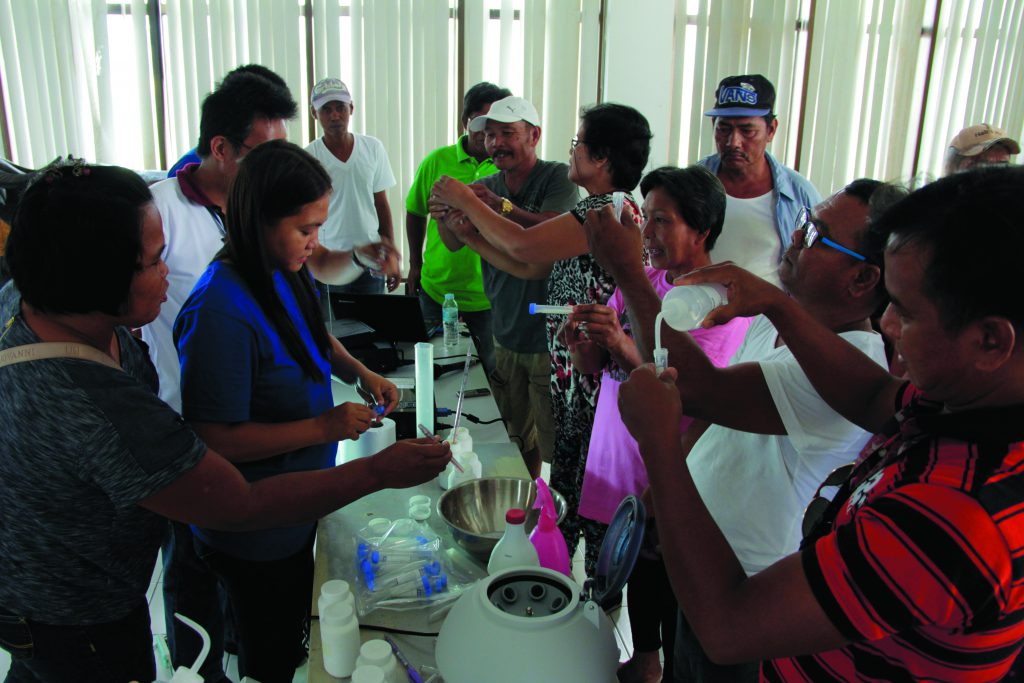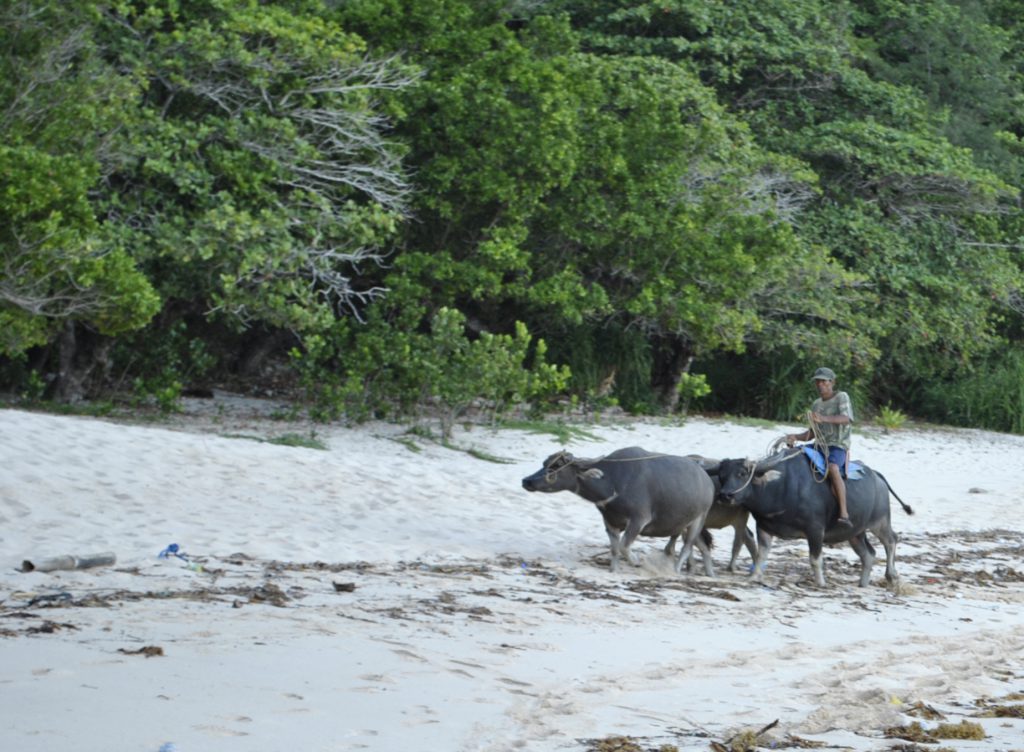The Philippine Carabao Center (PCC), Department of Education (DepEd), and the local government unit (LGU) of the Science City of Muñoz, Nueva Ecija forged an agreement last June 21 for a milk supplementation program that will reduce malnutrition incidence at least among children in Muñoz elementary schools.
Representatives of the three entities signed a memorandum of agreement (MOA) at the Muñoz North Central School for the implementation of the program.
The program also aims to help the dairy farmers in the marketing of their milk produce.
This is in line with the project titled, “Nutrition Intervention through Milk Supplementation Program for Primary School Children in Nueva Ecija,” a collaborative school-based research of PCC, DepEd, and LGU in support of the House Bill No. 5269.
The bill, which was approved on third and final reading by the House of Representatives, aims to promote nutrition among school children, especially those belonging to low-income households, protect them from malnutrition and enhance their learning capacities. It also includes the institutionalization of the National School Feeding Program (NSFP) for public kindergarten and elementary pupils.
Under the MOA, the PCC and its partner-institutions will provide the milk supplement to Grade 1 pupils of 12 identified schools in the Science City of Muñoz where there is high prevalence of malnutrition.
Signatories of the MOA were PCC Executive Director Dr. Arnel del Barrio, City Mayor Nestor Alvarez, and Schools Division Superintendent Dr. Catalina Paez. Witnesses to the signing ceremony were Assistant City Schools Division Superintendent Ronilo Hilario, PCC Division Chief- Research for Development Dr. Annabelle Sarabia, Senior Education Program Specialist Dr. Leoval Dela Cruz, and City Cooperative Officer Engr. Joel Manuel.
The undertaking will be implemented through a cost-sharing basis among the concerned agencies. PCC will provide 107,508 sachets of 200 ml pasteurized toned buffalo’s milk for 204 feeding days (one school year) for 527 Grade I pupils. The commodity will cost Php1,290,096.
The LGU- Science City of Muñoz, on the other hand, shares the delivery cost of Php158,130 from PCC to the intended public schools and other expenses necessary to ensure the quality of milk after the release from PCC.
The city schools division of Muñoz takes care of other logistical support to ensure smooth implementation of the project such as expenses for meetings and office supplies.
“This project is aligned with the mandate of PCC to improve the general well-being of our rural farming families by engaging them in carabao-based enterprises and to reduce malnutrition problem among children by drinking carabao’s milk. Providing for better nutrition for the children is a wise development investment for their future,” Dr. del Barrio, in his inspirational message, said.
Nutritionists said that carabao’s milk contains riboflavin or vitamin B2 needed for normal growth, an agent against skin swelling, inflammation of the lining of mouth and tongue, and dizziness. Its vitamin A content helps in maintaining good eyesight while vitamin D, calcium, and phosphorus are valuable nutrients for strong teeth and bones.
Mayor Alvarez disclosed that his office and the school’s division superintendent of Muñoz are currently studying the possibility of passing an ordinance that prohibits the sale of junk food and soft drinks in all school canteens in the city. Once finalized and approved, he said, the junk foods will be replaced by dairy products such as carabao’s milk, and other healthy food and drinks.
“My dream is for the schoolchildren in this city to become brighter, healthier and more enthusiastic. One way of achieving this is through this milk supplementation program. We are willing to provide the necessary support to broaden and sustain this program,” Mayor Alvarez said.
The parents of the children, who were noticeably delighted about the program, expressed their appreciation to PCC, DepEd, and to the LGU-Science City of Muñoz for extending their help in ensuring the nutritional welfare of their children.
“My child has been drinking carabao’s milk since May and I can say that he doesn’t get sick too often now. I used to buy it from our neighbor but it is not always available. Thanks to this program, my son would be able to drink carabao’s milk regularly for free,” Rachele Niegos, a mother of one of the Grade 1 pupils at Muñoz North Central School, said.
A similar program is also being carried out in selected schools in San Jose City.
A project team of PCC is identifying two more municipalities in Nueva Ecija for the implementation of the milk supplementation program in elementary schools.



